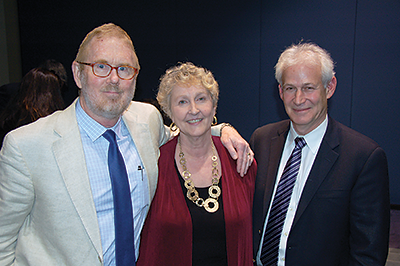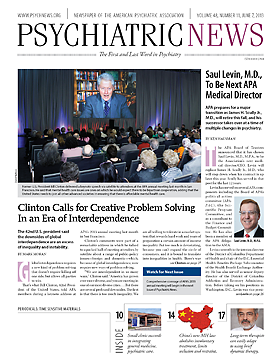That poor children sustain disproportionate burdens of adversity, stress, and disease is no surprise, said W. Thomas Boyce, M.D., speaking at the annual meeting of the Pediatric Academic Societies in Washington, D.C., in May.
By now, there’s little doubt that a wide variety of socioeconomic stressors—housing density, noise, violence, poverty, family turmoil, pollution, and more—are associated with worse health outcomes, said Boyce, a professor of pediatrics at the University of British Columbia.
“There is a monotonic, linear association at every socioeconomic level that conventional mediators, like smoking or cholesterol, fail to account for,” he said. “And there is a pervasive difference in the experience of everyday life when you compare children growing up in the middle class to those in disadvantaged circumstances.”
Stress can be good or bad or ugly, added neuroendocrinologist Bruce McEwen, Ph.D., the Alfred E. Mirsky Professor at Rockefeller University in New York.
Positive stress results in pleasure when a person overcomes challenges successfully, said McEwen. Tolerable stress occurs when something bad happens but is met with good social and emotional support that promotes survival.
“And then there’s toxic stress,” Mc-Ewen said. “That involves lack of mastery and control, a lack of self-esteem, and a lack of emotional and social and material support.”
Toxic stress that produces excessive or prolonged activation of stress-response systems can lead to long-term disruptions in brain architecture, immune status, metabolic systems, cardiovascular function, and gene expression.
But as powerful as that association may be, there is also great variability in developmental outcomes, even within particular socioeconomic levels, and the mechanisms that might account for that variability are not clear, said Boyce.
“The neurobiology of stress undergoes dramatic changes over the childhood years,” said panelist Megan Gunnar, Ph.D., a professor of child development at the University of Minnesota. “During childhood, paradoxically, children are both buffered from and highly vulnerable to psychosocial stressors,” said Gunnar. “However, the impact of those stressors may not be fully realized until adolescence.”
Even among poor children, however, there are important individual differences in susceptibility to adversity, said Boyce, who has studied children’s autonomic and adrenocortical responses to psychological tests in the lab.
He observed children in both supportive and high-adversity contexts and then divided them into groups with high and low reactivity.
Some were “dandelion children,” he concluded, adopting a term translated from Swedish. Like the ubiquitous weed, they could do well in high- or low-stress settings. “These were the kids with low reactivity, who were stable and relatively indifferent to social context,” he said.
Others he dubbed “orchid children,” highly sensitive and reactive to their environment, who had either catastrophic or excellent outcomes, depending on the context in which they were raised.
Gene-by-environment interactions could account for some of these differences, but not all. “Risk alleles alone are not enough to cause maladaptive phenotypes,” he said. “So I suggest this may happen by way of chromatin modification by epigenetic marks.”
The promoter region of the gene, which turns the gene up or down, plays a significant role, he said.
A methyl group (CH3) occupying the promoter region silences the gene, preventing transcription and translation, he said. “Stress allows hypomethylation of the promoter region and thus the emergence of a maladaptive phenotype in development.”
Yet the life course influenced by early childhood stress is not immutable, said the speakers. “In puberty, there’s also an opportunity for children who started in adverse settings to ‘reset’ their systems when in better contexts,” Gunnar noted.
In addition, interventions such as physical activity, cognitive-behavioral therapy, social support, and adjunctive use of some medications can take advantage of the brain’s plasticity and restore inhibitory control, working memory, and cognitive flexibility, McEwen explained.
But more could be done at the interface of science, practice, and policy to improve the prospects for children battered by stress, said discussant Jack Shonkoff, M.D., a professor of child health and development at Harvard School of Public Health and Harvard Graduate School of Education.
Explaining to the public—and to the medical profession—the causal links between significant adversity in childhood and lifelong physical and mental health impairments might be a good start, said Shonkoff. “We must also design and test new intervention strategies to reduce or mitigate the biological disruptions associated with toxic stress in the early years.”
Those might include building skills and capacities for parents, improving training in child development for child-care providers, boosting parents’ employability to provide more economic stability, and building stronger communities to help buffer families from the burdens of toxic stress, he said. ■

